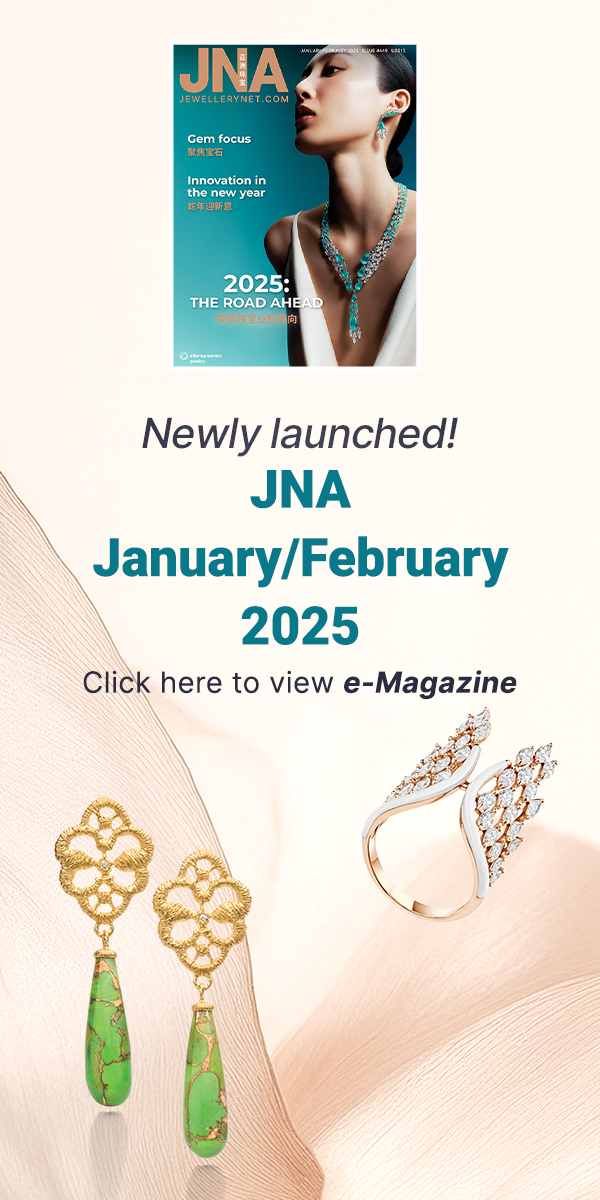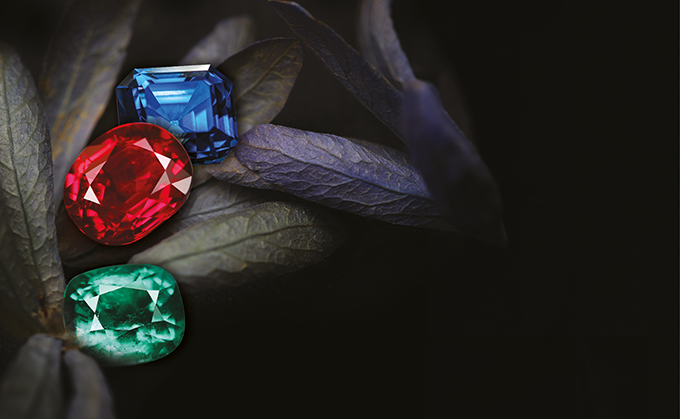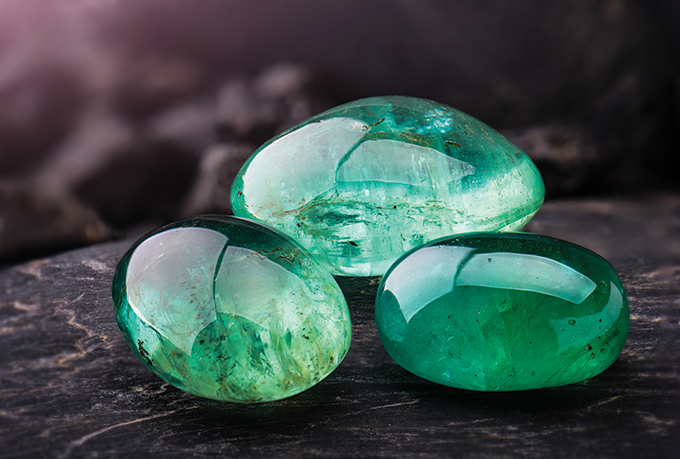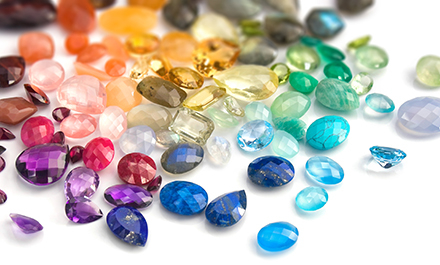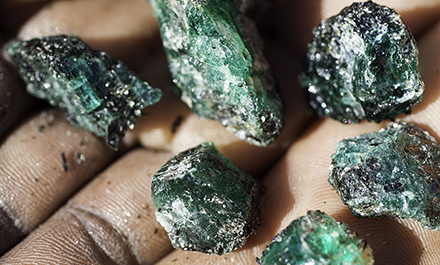Emerald, ruby and sapphire will always epitomise affluence and refinement in the jewellery industry, with buyer enthusiasm for these premium gems staying strong amid escalating prices.
This article first appeared in the JNA May/June 2024 issue.
The market for the coloured gemstone trio of emerald, ruby and sapphire remains stable in the face of multiple challenges, including lacklustre sales in China, supply constraints and soaring prices, as well as macroeconomic and geopolitical upheavals.
Citing these gems’ inherent beauty and value, dealers said demand is steady for top-quality stones, particularly in the 2-carat to 10-carat ranges. Companies are also exploring growth possibilities in destinations other than China, including Asia and the US.
The future of these gems is brighter, too. Amid the markets’ centuries-old affinity for the so-called Big Three in the jewellery trade, there are new opportunities to be had with a younger generation of buyers developing appreciation of and love for these gems.
Steady demand
Hong Kong-based Gems Trading Co is seeing robust demand for Colombian emeralds across the board, especially since prices are constantly on the rise. The company deals in a wide range of gemstones, including Colombian emeralds.
Ashish Dangayach, director of Gems Trading, said companies are seeing 10 per cent to 15 per cent price increases per year – a development welcomed by the trade because it inspires heightened confidence in emeralds as a store of value.
Right now, however, demand significantly exceeds what is in the market, which means prices are likely to continue rising.
Dangayach remarked, “People are training their sights on emeralds because prices keep appreciating, which is healthy for the trade. Supply remains tight, though. As suppliers, we are buying more than we are selling.”
Asia is a steady market for emeralds, followed by Europe and the US, with buyers opting for finer-quality goods. India is also a top buyer, specifically for larger but lower-quality gems. Chinese customers, in particular, favour higher-quality stones in smaller sizes.
For his part, Raghav Lashkary, sales manager at Rajender Gems HK Ltd, pointed to an uptick in demand for fancy carved emeralds as well as small-sized cabochons ranging from 1 carat to 5 carats from the Chinese market. Preference is higher for emeralds of Colombian origin, but Zambian gems are likewise moving well.
Lashkary also shares Dangayach’s observation about a boom for emeralds in the Indian market, almost three years after the Covid pandemic. Their experience varies, though. Rajender Gems is witnessing a preference for large emeralds of above 50 carats to 300 carats among Indian clients.
“We recently sold a 700-carat emerald. Indian buyers are more willing to invest in larger stones because there is demand for jewellery sets and statement pieces,” revealed the company official.
For Rupesh Jain, owner of India-based coloured gemstone dealer Arham Gems & Jewels, the emerald business is a bit subdued, specifically in the China market on account of the country’s lacklustre economy.
The company mainly sells Zambian emeralds, with China, Hong Kong and India as major markets.
There is still some activity in China, but buyers have become very selective, noted Jain. “They want a particular range. Between 2 and 4 carats and around US$400 to US$800 a carat – that is the sweet spot for them. Interestingly, they were willing to spend as much as US$1,000 per carat in the past,” he added.
Exceptional gems
Ruby maintains its preeminent position in the trade as a perennial darling among coloured gemstones.
William Hakimi, CEO of A Hakimi & Sons, cited steady sales for finer-quality single stones amid tighter supply. Strong demand is also causing prices to skyrocket. By Hakimi’s estimates, ruby prices have gone up by at least 30 per cent on average since last year.
The company mainly sells Mozambique rubies and a limited stock of Burmese rubies.
“Price hikes may be steep, but buyers are still interested, with the finer gems continuously selling, specifically in the US and Europe,” noted Hakimi. “Buyers from China, on the other hand, are on the lookout for medium-quality rubies.”
Meanwhile, Nitin Golechha, director of Mozambique ruby dealer Gems & Jewels, highlighted challenges in the China market, which are largely due to a sluggish economy and buyers’ weaker purchasing power.
This was not the case about a year ago when Chinese customers enthusiastically bought gems to fill inventories. The drop in their buying capacity also meant those who are still acquiring gems are now settling for lower-quality, more pocket-friendly goods such as 1-carat to 2-carat stones.
Gems & Jewels’ major markets are China, Japan and Hong Kong, but with continuing uncertainties, the company is focusing on strengthening its US business.
“US clients are interested in both heated and no-heat rubies. In fact, the US market is more inclined to buying a mixture of materials. China, on the other hand, only goes for unheated rubies, so it is a bit limited,” explained Goleccha.
Pann Myintzu Thein of Myanmar’s Naing Family Mogok Gems & Jewellery Co Ltd corroborated industry concerns on supply scarcity, particularly in Myanmar (formerly Burma) because of an ongoing civil war in the country.
Political unrest notwithstanding, appetite for top-quality Burmese rubies is steady, the company official said. Rubies account for about 90 per cent of Myanmar’s coloured gemstone production, she added.
“Buyer interest in Burmese rubies is only getting stronger, but mines have stopped producing because of the civil war, which means there is more demand than supply,” explained Pann Myintzu Thein. “Prices, too, have escalated five-fold since 2023.”
Naing Family specialises in oval and cushion cuts, which are highly sought after in the trade today. Pann Myintzu Thein also agreed with industry observations that a rising number of people are opting for coloured gemstones, rubies included, for engagement rings.
She attributes this trend to celebrities increasingly wearing coloured gemstone engagement rings as well as red-carpet and everyday pieces, which reinforces coloured gemstones' reputation as the more exceptional, versatile jewellery option.
Brilliant possibilities
Opportunities, meanwhile, are aglow in the sapphire business, with major global markets actively purchasing the beloved gem, according to Sam Haghighat, owner of New York-based Ijadi Gem.
Prices, especially for unheated stones, remain strong and have been on the uptrend over the past two years. Demand is primarily concentrated on 2 carats to 10 carats, with sturdy market interest in high-quality sapphires with superior clarity.
“The main driving force of the price hikes is solid demand from Europe and Asia,” shared Haghighat. “China has slowed down considerably over the last three or four months, but the rest of Asia is doing well.”
Ijadi Gem sources its sapphires mainly from Sri Lanka and Madagascar as well as Myanmar. The latter, however, has stopped producing sapphires, so the company acquires its Burmese sapphires from second-hand sources or the antique market to be recut, explained the company official. At the moment, around 90 per cent to 95 per cent of sapphires being traded globally are from Sri Lanka and Madagascar, he added.
Sapphires are similarly facing brilliant possibilities in the bridal jewellery segment. Like other premium-quality coloured gemstones, sapphires are figuring a great deal in modern engagement rings, thanks to jewellery brands purposefully promoting colour in their latest collections.
Smaller sapphires of around 2 carats to 3 carats are extremely popular engagement ring choices, according to Haghighat.
“There is a big movement in the engagement ring category where buyers are choosing coloured gemstones more and more as an alternative to white diamonds. This trend is also influenced by a younger generation of buyers,” he continued.
Ron Rahmanan, vice president of Sara Gem Corp, likewise recognises the potential of coloured gems becoming top of mind for couples, but the possibility is not being explored as much as it is supposed to be.
“Sapphire, ruby and emerald are much rarer than diamonds and are better options especially if you are making a lifetime commitment,” noted Rahmanan. “They also carry different meanings.”
The trade should strengthen promotion of coloured gems, too. Unfortunately, the gemstone sector is more fragmented and with limited budget, unlike white diamonds, which has the backing of industry giants like De Beers.
Rahmanan, however, highlighted the inimitable allure of coloured gems, especially finer-quality stones amid challenging times. The most desired sizes at present are below 10 carats, he added.
“The best-selling gems now are between 2 carats and 6 carats. There is also consistent demand for melee sizes of 2mm to 3mm,” he shared. “Large and extra-fine gems of 20 carats to 30 carats, which are investment pieces, also move well. There is however very little interest in anything between 10 carats and 20 carats. For sapphires, this is the category where prices were almost unchanged.”
There is also a recurring trend for multicolour jewellery layouts, giving rise to higher demand for pink sapphires.
“Fancy sapphires, like pink, green or purple, are very trendy. But they come and go, and dealers just have to ride the trend. The classic blue sapphire, however, will always have a strong following, led by educated and discerning consumers,” explained Rahmanan.


